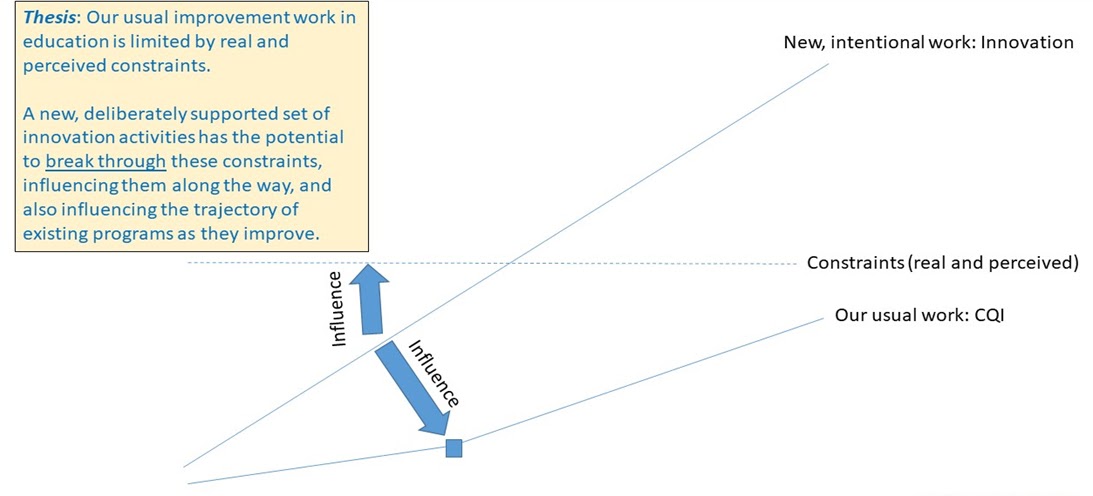Community Engagement
Innovation Dinners
We hosted three Innovation Dinners (“Dialogue and Dine”) in April and May 2018. These dinners were attended by a diverse group of nearly 50 innovators from across the University of Michigan. Our aim was to determine whether there was a need for more dramatic efforts to improve learning and teaching, lead change and influence in education, and measure performance and impact on health.
From these meetings, themes emerged:
We face real challenges within education. Education has lost its focus on the learner. As a system, education has many controls for learning that may exclude different types of thinkers and stifle innovation. Further, these controls create tensions, especially in terms of administrative structures, accreditation and credentialing requirements, and an incremental culture of improvement. Finally, we face challenges of engaging learners and the community to ensure that education addresses societal needs.
We also face barriers to innovation in education. There was broad agreement that innovation in education is important; yet, we inevitably face barriers. Some of the barriers we identified as a group include: constraints (real and perceived); silos (intentional and unintentional); not working developmentally or strategically across the medical education continuum; not embracing the failure cycle or creating “sandboxes” to innovate with the freedom to fail.
Innovation should be separate, but related to continuous quality improvement. Continuous quality improvement (CQI) remains an important component of all of our education programs. However, CQI should not be confused with innovation. Rather, CQI involves incremental change that often builds on existing premises and responds to feedback; and innovation means disrupting and redefining these premises in novel ways to break from the past and impact change.
An Innovations Unit can help us actualize our goals, but we must be strategic, deliberate and mindful of leveraging existing resources. An “Innovations Unit” could serve as a place to aggregate forward and creative thinking. Our health system is resistant to change and too often innovative ideas are stalled in bureaucratic confines. A unit, specifically designated for innovation, would legitimize innovation as a mindset and signal our institution’s commitment to it. Having a designated, physical space could also help fuel creative thinking and allow for collaboration across different groups. Nonetheless, we must also remember that such initiatives may already exist on campus and a new unit may only create unintended barriers/silos. We must also be strategic in developing the scope of this unit to allow it to encourage innovation across broader domains and avoid narrow or disconnected thinking. A unit can provide the structure to develop wide-ranging and cross-cutting ideas into real outcomes.
